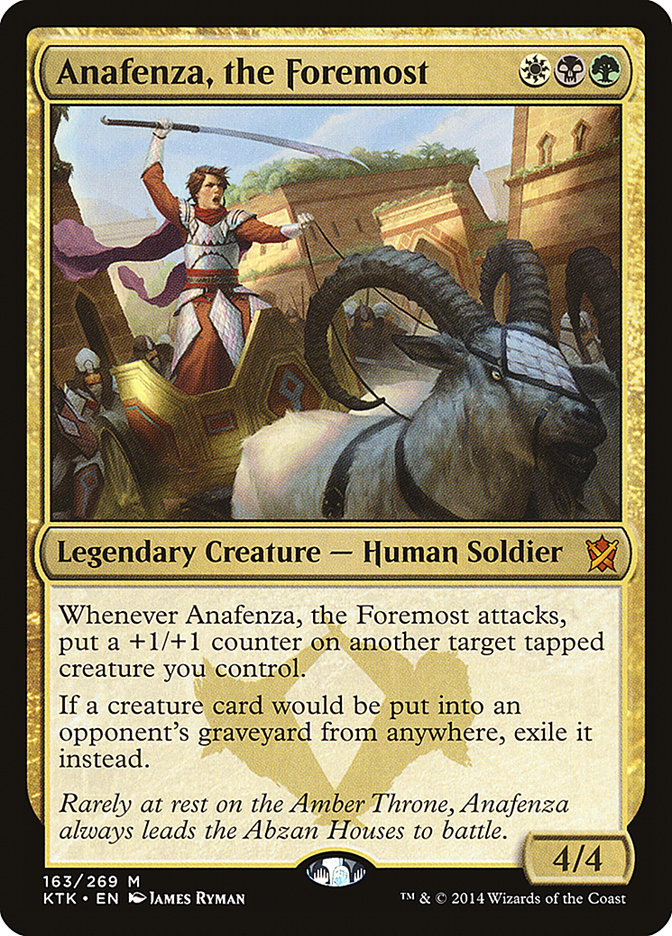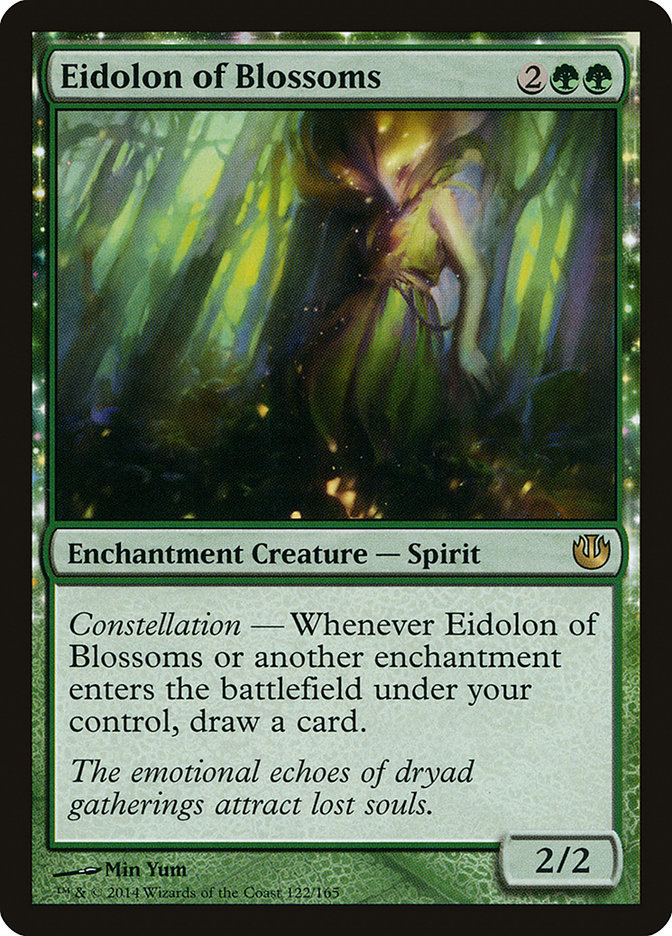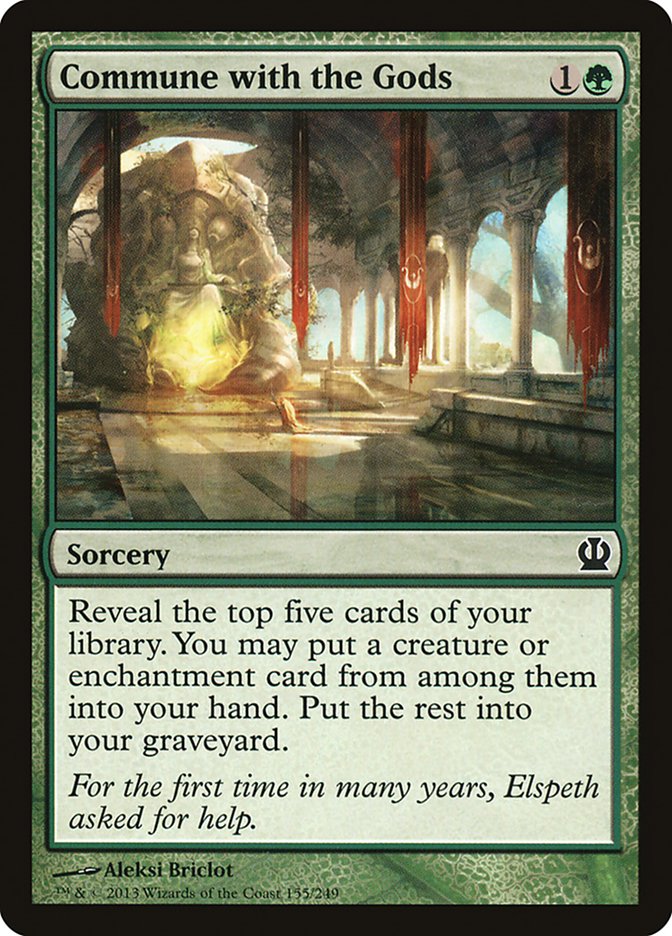Settle down, kiddies. This actually doesn’t have anything to do with a borderline playable enchantment. Today we’re going over what I feel is the best
incarnation of Abzan Reanimator, and we’re going in-depth. You’re probably saying to yourself “is this guy seriously still writing about Abzan?” Well, to
you I say “if Brian Kibler can make twelve videos about Temur, then I can write about my current favorite deck.”
Today is going to be different. I think I nailed it.
On Saturday I decided to put my money where my mouth was and battle with an update to Abzan Reanimator. My local shop was running their first Grand Prix
Trial for SCG-sponsored GP Miami, and I was a little short of securing my second bye. If victorious I’d lock in the 2-0 start and save myself the horrors
of trying to grind in on the Friday before the event. If I lost then I’d have no idea what the hell to write about today–yet here we are.
I knew before I even started driving to the event that I was going to play Abzan Reanimator, but I had no idea which version I wanted to play. There was
the variant that Glenn Jones and Gerry Thompson had played a few weeks ago that had gained a fair bit of popularity over Magic Online and had posted some
respectable results 4-0’ing multiple Daily Events.
The other side of the coin was battling with one that was a little lower to the ground. Some were completely forgoing cards like Hornet Queen and Commune
with the Gods to employ the Eidolon of Blossoms and Pharika, God of Affliction engine. They each have their merits, and I couldn’t really make up my mind
as to which route I wanted to go with.
Then I thought of this little girl:

I decided to fiddle around with the numbers and try to tech out the deck in a way that would give it powerful synergy while still allowing it an endgame
that other midrange decks couldn’t hope to compete with. Since Sidisi, Brood Tyrant was becoming a bigger force, I knew I wanted maindeck cards to hose it
and hopefully nail down game 1s against it. Lastly, Jeskai Tokens was a matchup I never wanted to lose to, so I made sure the proper adjustments were made
for sideboarding so that it gave me the best chance to never be on the wrong side of a Jeskai Ascendancy.
Quick Aside On Jeskai Ascendancy Directed At WoTC R&D:
Were y’all on drugs?
End Quick Aside On Jeskai Ascendancy Directed At WoTC R&D:
While Sultai Reanimator was the belle of the ball during the Players’ Championship, I believe Abzan Reanimator is a better deck in general. You have a
similar Plan A by abusing Whip of Erebos, but your Plan B of jamming Siege Rhino in multiples can easily dominate any match. Sultai is clearly a fantastic
deck–it even took down the Seattle Open last week–but overall I believe Abzan is where you want to be if your plan is Whipping creatures back. It may
just be personal preference.
Before the event this is what I came up with:
Creatures (28)
- 2 Hornet Queen
- 4 Sylvan Caryatid
- 4 Courser of Kruphix
- 4 Satyr Wayfinder
- 3 Eidolon of Blossoms
- 2 Doomwake Giant
- 1 Pharika, God of Affliction
- 1 Soul of Innistrad
- 1 Reclamation Sage
- 2 Anafenza, the Foremost
- 4 Siege Rhino
Lands (24)
Spells (8)

When other decks want midrange battles you must become…more…midrange..ier…
Let’s explain a few of the card choices. I’m kind of going to gloss over some of the more obvious card selections, because I’m certain you know that
Courser of Kruphix + Sylvan Caryatid = Good! A few of my picks probably do warrant a little discussion, however.
Anafenza is such a powerful tempo swing–giving you a ridiculous 4/4 body at the low cost of three mana. Her effect is almost always relevant, even when it
may seem innocuous (such as when you kill off a Goblin Rabblemaster and Seeker of the Way against Jeskai and it makes casting their Treasure Cruise that much harder). A lot of decks had adopted her in their sideboard, but very few had injected her in their main sixty. I decided to rectify that
and give her the spot she rightfully deserves.
Anafenza adds a lot to that Plan B we were discussing earlier: sometimes you will beat someone down without even casting a single Whip of Erebos or Hornet
Queen, and she adds to this equation very well. The obvious implications are how great she is when you’re facing another graveyard-based deck, and when you
untap with her, games feel a lot easier to close. I won several matches against Sultai Reanimator because they didn’t have early removal and she stunted
their growth, giving me time to really blow the game open before they could start their Whip engine. Also, her often-overlooked ability to add a +1/+1
counter to another attacking creature made my Rhinos bigger than their Rhinos, and that makes blocking much less attractive to an opponent.
This card is one that I’ve always really liked, but it felt like the best place for it was in G/B Constellation and it had little purpose elsewhere. Well,
other Abzan and Sultai decks started adopting it in a different philosophy; trying to grind out their midrange opponents with a wealth of card advantage
often provided by a card like Pharika, God of Affliction and the 1/1 enchantment snakes it generates to give a steady stream of cards.
The reason I like this card in my current strategy is that it now gives a very effective Plan C that I didn’t have before. Prior incarnations would see
after board trying to get something going with Abzan Charm card draw, but I’d lose a lot of versatility. The case for adding Eidolon was a simple one:
there are cards they have to kill to stay alive, and Eidolon helps you jump right back in the game with a fury. As you might have seen this weekend in the
games Reid Duke played against Brad Nelson, the only path to victory he had was with plenty of card draw from Eidolon which eventually overwhelmed Brad.
A common argument is that it competes with Rhino in the four-drop spot, but that’s a fallacy. I subscribe to playing whichever one is going to generate you
the most advantage at the time. Either card makes for a strong follow-up play. Not to mention it gives another enchantment to trigger your Doomwake Giant.
When talking at length with some other players and discussing sideboarding, each one almost unanimously declared that they board out Commune in almost
every match. Commune never really wooed me, and due to the nature of sideboarding it always felt like a pretty big liability, so leaving it in just felt
incorrect a lot of the time when you were trying to bring in Thoughtseizes or Nissa, Worldwaker. My desire to put in a higher density of threats with
Anafenza and a consistent drawing engine in Eidolon made it an easy cut.
Removing Thoughtseize from the main was a bit difficult, but again, I wanted as little air as possible in the middle-to-lategame. There aren’t a ton of
cards I want to be actively Thoughtseizing in the first game, so I was happy to regulate them all to the sideboard.
I decided I still wanted to keep the key cards that make this deck such a great choice at the moment early on in building. With more card draw I could trim
a few of the numbers and drop Hornet Queen to a two-of, as well as do the same with Hero’s Downfall. Soul of Innistrad was a card a lot of more
Eidolon-centered builds had cut, but it’s absurdly powerful and I wasn’t ready to give up the ability to rebuy my Rhinos, Giants, and Queens. This was when
I came to the crossroads and I decided an amalgamation was what’s best for the field: all the power of one build and a lot of the consistency and synergy
of the other. Together they made beautiful music.
The GPT itself went very smoothly for me as I went undefeated through all rounds leading up to the finals where I faced Jeskai Tokens for the second time
in the evening. The matches weren’t extremely eventful. Game 1, I was able to take control of with a series of Siege Rhinos and timely removal spells to
punch through enough damage to kill my opponent. Game 2 saw the sheer power of sideboarding as two Reclamation Sages took a couple Jeskai Ascendancy off
the board while Bile Blight and Drown in Sorrow made sure he never was able to amass an army of tokens. I tore through about two-thirds of my deck and
still hadn’t found a way to close out the game and eventually we found ourselves in a topdecking war which my opponent won by drawing a Treasure Cruise.
Whip of Erebos would not be outdone, and I finally drew the marquee legendary enchantment to return a Hornet Queen to play, which along with the tokens she
brought was enough to drop his life to where the next turn’s returned Rhino ended the game.
Easy peasy lemon squeezy. Just like that I had my two byes.
Each part of the deck felt very strong and versatile, which is what I was going for in the first place. Eidolon of Blossoms was fantastic at either clawing
me back in a game I was losing or putting me far ahead in one I was winning. I only found myself boarding it out against Jeskai Tokens in favor of more
reactive spells. Anafenza was excellent against Sultai Reanimator, which I also played twice. Having her in my opening hand against them made game 1s feel
so much better, especially when I was on the play and saw the look on my opponent’s face when they were banking on the turn 3 or 4 Sidisi to build an
advantage. Reclamation Sage is a card I could easily see being brought up to four because of how well-positioned it is in this format–it literally has a
target against almost every single deck.
Going forward you can bet I’ll be playing Abzan Reanimator until another deck comes along that makes my heart flutter.
Not only does it have all the tools to beat the best decks in the format, but I think it just might be the best deck in the format.
Don’t believe me?
Play it.
I’m off to wrap presents. Happy Holidays, kiddies.




